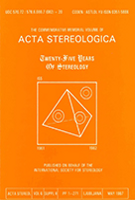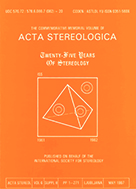- Accueil
- Volume 18 (1999)
- Number 3 - Nov. 1999
- Use of linear discriminating function for the description of the effects of microstructure on surface roughness after fine-turning
Visualisation(s): 207 (3 ULiège)
Téléchargement(s): 115 (3 ULiège)
Use of linear discriminating function for the description of the effects of microstructure on surface roughness after fine-turning

Abstract
It has been proven that successful cutting of metal materials depends on the morphology, and the size and distribution of intermetallic phases in the basic microstructure. An analysis of the microstructure of some aluminium alloys was carried out on an automatic system for image acquisition and processing. For the analysis intercept linear and area measurement methods were used. The present report describes the plastomechanical mechanism of surface generation in machining various aluminium alloys with silicon and its influence on the workpiece surface. By relating the data on the mean arithmetic roughness and the corresponding intercept length of the solid solution crystals it is possible to get, with the aid of the linear discriminante function, the particular areas which define the classes of expected roughness with respect to the microstructural effects in the same fine turning conditions.





